Text
scrolling twitter today and then coming over here is like walking out of a burning building and then walking into the calm remains of a building that burnt down 5 years ago and has been reclaimed by nature.
87K notes
·
View notes
Note
what are some of your favorite artists/influencea?
OK, STRAP IN-
This is gonna be my master post regarding inspo and favorite artists and style and stuff, because then I can always link to it whenever I get the questions again later!
This is gonna be my master post regarding inspo and favorite artists and style and stuff, because then I can always link to it whenever I get the questions!
The style I work in is called the 'Ligne Claire', it is a classic European comic book style, championed by Hergé (the guy who drew Adventures of TinTin) and Moebius.


Now, 'Ligne Claire' is heavily inspired by olden Japanese woodblock prints, called 'Ukiyo-e', which means something like 'pictures of a floating world', depicting a WIIIDE range of stuff, often everyday life and common locations. It's great stuff. Look up the likes of Katsushika Hokusai or Utagawa Hiroshige, or just the art of 'Ukiyo-e' in general.



I'm sure you can see both these inspirations clearly in my art. However, there is also media and artists from more recent times, that have had an influence on what I do. For instance, as a kid I used to be big into comics and monster/robot/action movies. Especially stuff like Tank Girl (Jamie Hewlett), Hellboy (Mike Mignola) and whatever Japanese Tokusatsu stuff I could find.





Then eventually I did expand to more US comics like Marvel, (I am not that big on Manga, but I like 'Dorohedoro' by Q Hayashida, who coincidentally once said she is also more interested in western games/comics, even drew amazing Ant-Man covers for Marvel once!), TV shows (Ugly Americans,... anyone remembers? And I am a huge fan of Bojack Horseman, too) and Video Games, where I especially love stuff like the Fallout Series, Hotline Miami, Let It Die,.. but also stuff like COD, Tekken and Dark Souls. Lots of things. (I now work mostly in games, too.)








But all that media and artists aside, I also have a super huge soft spot for stuff like product design, bottles, pizza boxes.. for stuff like Typographie and such (I went to art school for graphic design). Which are all a huge part to my inspiration and reason why I love to draw clutter, I guess?

Anyways, yeah. My art DNA inspiration master post. Hope it clears some things up!
27 notes
·
View notes
Photo
oh hell yeah cute SU art it's like i'm really on 2013 tumblr
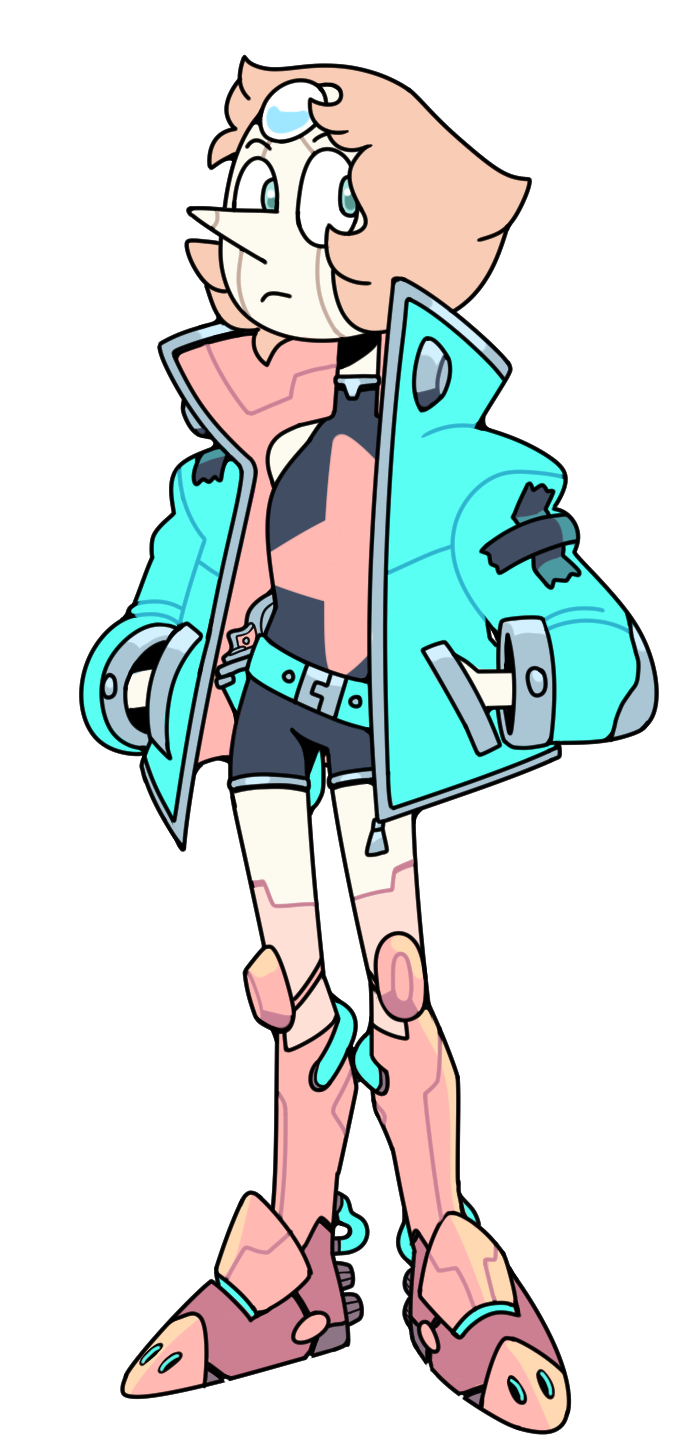


Odds are reasonable of someone requesting that.
3K notes
·
View notes
Link

1 note
·
View note
Text
NorthWest Speedfest, Seattle's first speedrunning charity event, starts this Saturday (10/28) at 9 AM!
NWSF is a charity marathon in the vein of GDQ where gamers will blast through their favorite games as quick as possible. The event takes place this weekend, starting at 9 AM on Saturday and going to about 11:30 PM on Sunday.
The lineup of games includes staples like Mega Man and Legend of Zelda, and more esoteric ones like SUPERHOT VR and Minesweeper. All proceeds will go through Extra Life, a gaming-based charity event, to fund Seattle Children's Hospital.
Links:
Stream - https://www.twitch.tv/nwspeedfest
Schedule - https://bit.ly/nwspeedfest
Twitter - https://twitter.com/NWSpeedFest
Discord - https://discord.me/nwspeedfest
NorthWest SpeedFest was made possible with the support of Northwest Esports (http://nwesports.org/)
0 notes
Link
i interviewed a real cool dude about his real cool game
0 notes
Link
ayyy late night posts
0 notes
Link
i liked this game so much i wrote about how much i like this game
1 note
·
View note
Link
“Blade Runner asked the question “What does it mean to be human?” Here we are, thirty-five years later — we haven’t found the answer, but the world of Blade Runner is still looking.”
0 notes
Text
Gigantic & PAX West Decompression (9/6)
Been a while since I posted about games, but August was a rather weird month for me. Aside from making and releasing my first game, friends came up to visit, job-hunted, and questioned my career choices. Standard stuff.
To start off with, last weekend I attended PAX West in what was my 2nd full convention, 2.5 overall (interesting story that involves a Portal sweater, Chipotle, and testing the bonds of friendship). PAX was a truly amazing experience that further cemented my drive to be in the video game industry, no matter the capacity. My problem has been where exactly that niche is. At 24 years old, I’ve got a bit of a late start compared to other people. But, as I have told myself and other people have told me, it’s wrong to think of the past few years as a waste. Without them, without the struggles I endured, I wouldn’t be in a position now where it truly feels like I’m following my passion.
It does get hard sometimes. Despite my best efforts, comparison will always seep through, and with them regrets. Regret that I didn’t follow this sooner. Regret that I didn’t study compsci. Regret that I haven’t been more consistent with my creative endeavors. But regrets look only at the past, and while the past has been important to shape who I am today, my focus needs to be directed forward.
Video games have always been a part of my life and will continue to be important to me. Seeing that same dedication and passion at PAX West was truly eye-opening. Getting to meet the developers to Children of Zodiarcs, discovering that the LucasArts crew is back and better than ever, and simply being in an environment where games are celebrated: well, it was better than I could’ve imagined.
So until the day I find myself a part of the industry that creates these fantastic titles, I’ll be happy simply adoring them from a distance.
At least that distance has shrunk, right?
Due to a mix of different factors, I haven’t played many video games lately. Gigantic is one of the few that I have consistently made time for. I’ve been a fan of the game since it was first announced back in 2014 and tried to play the closed beta (my computer was potatoes at the time). With the game’s full release, it’s at an extremely polished state in terms of aesthetics and design. Unfortunately, with the rise of hero shooters like Overwatch, Paladins, and Battleborn, it’s gotten a bit lost in the shuffle. It’s a shame, because Gigantic is very clearly a labor of love made all the more impressive that the team sits at under 100 developers. Having met the developers at PAX West and confirmed that they are indeed passionate creators, I want this game to succeed even more. It’s not without its rough edges but overall it’s a fantastic experience.
Story
The world of Gigantic is rather vague and a simple Light (House Aurion) vs. Dark (House Devaedra). Five heroes fight for a giant glowing gryphon against another set of five heroes fighting for a giant glowing snakedragon thing. Battles take place across three different locations (desert industry, overgrown and waterlogged ruins, shipwrecked glacier) where ultimately the focus is the gameplay, not the story.
That said, there are still quite a few story elements to be found that aren’t tied to the core gameplay. Gigantic divvies up its lore and backstory in the skins for the heroes and their weapons, doling out bits of information through small sentences that, much like Dark Souls, gives a very small window into a very wide world. Currently, it’s a mish-mash of interesting lore, so hopefully Motiga will take the effort to tie these threads together somehow later down the line.
Mechanics
Back in the beta, the game handled rather floatily. Floaty? Floatingly? Yes. At any rate, whatever has been done since then has smoothed everything out immensely. What Overwatch did for FPSes, Gigantic did for OTS 3rd person. This is thank is no small part to the gorgeous animation on Motiga’s part, where moving in three dimensional space feels like a watercolor in motion. Every motion flows beautifully from one to the next and all the abilities flow and cancel into each other very smoothly.
My one gripe is with the stamina system which, balance-wise, I understand, but it still takes some getting used to. The in/out of combat system isn’t entirely intuitive, at least off the bat. The more games I’ve played the less attention I’ve had to actively pay to the indicator at the bottom of my screen that lets me know as I’m about to exit combat.
At first, it was easy to get lost in the effects and numbers piling up but I’ll attribute that more to getting used to the format of the game rather than any design flaw on the developers’ part. As each game passed and I became increasingly familiar with each Hero’s abilities and the corresponding particle effects, it became easier to parse out what was happening where and why. The combat can best be described as controlled chaos, but that’s pretty standard fare for hero-based games. And that’s a large part of why I love them.
On the macro scale of things, matches take place across roughly symmetrical arenas that, similar to Heroes of the Storm, has objectives laid out that generate resources for the team that has captured them. Fighting, if both teams are doing the right thing, will largely take place around these objectives. What I particularly love about Gigantic’s gameplay is that the objectives are active rather than passive, in the sense that gameplay is more than just about standing in and around the objective. The players can actively manipulate what sort of defenses the objective will have and it does factor into how the flow of a fight will pan out. The macro affects the micro in more ways than one and it’s been a delight to sort out the method in the madness.
Aesthetic
Gigantic is flat out gorgeous. The bold, striking colors and shapes all blend together in three dimensional space to create a vibrant world that is pure visual bliss to move through. It takes a page out of TF2 and, where Overwatch went a step towards realism, Gigantic takes a step towards style. Shapes and features are exaggerated, but form still does follow function. That’s a critical component missing from a lot of other games, e.g. Battleborn, Atlas Reactor, Borderlands, where the stylized visual aspects are incredibly pronounced but at times it feels like they’re colorful for the sake of being colorful. In a panel presented by the Motiga devs at PAX, they talked about the importance of shapes, silhouettes, and form/function dictating a character’s geometry.
Another huge point in the game’s favor is the decision to go for a more storybook feel, in that the characters feel very heavily cartoony and stylized while belonging to established Western fairy tale archetypes. It fits the world of Gigantic quite well. It threads a fine line between stark danger and playful whismy, whirling together into a blend of storybook fantasy that feels almost nostalgic.
Technology
Gigantic was built in Unreal 3, which explains the impressive effects that the game produces. Complex geometry is formed real-time and lighting and shading are cast on large, packed scenes. I don’t know too much about Unreal or what it’s capable of, but especially since beta whatever Motiga has done to smooth things out it shows.
Note: Posting this 10 days after I initially started writing, but chalk that up to an incredibly debilitating fever and a slightly bloody concussion. Better late than never, as it goes.
1 note
·
View note
Text
LOWREZJAM Post-Mortem
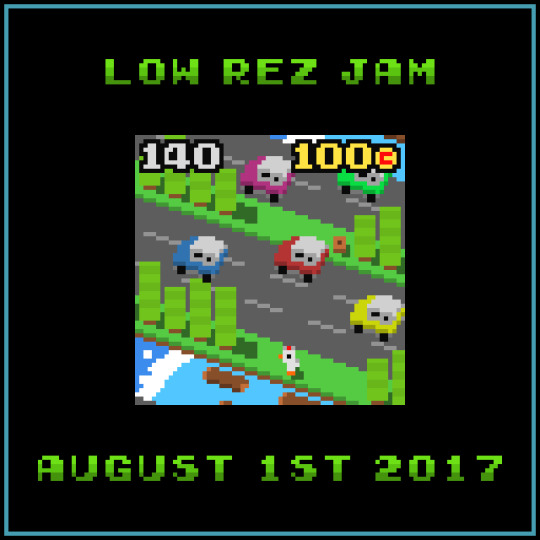
From August 1st to the 16th I spent an inordinate amount of time working on my first game. As someone who has only spent the past couple of months pursuing game development in earnest, I needed a way to stop generating an assortment of half-baked concepts and prototypes and instead release a completed product. LOWREZJAM allowed me to do just that, but perhaps not in the way I was expecting.
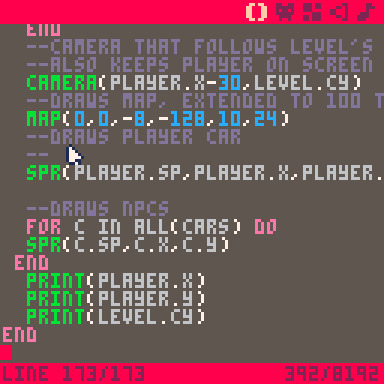
My experience in gamedev thus far can best be summed up as a trial-by-fire-where-everything-is-on-fire-and-new-fires-keep-popping-up.
The trickiest part of this whole process has been bridging the gap between expectations and reality. I’d tried to establish manageable goals for myself, and I don’t think my rationale was too unreasonable: a game limited to a 64x64 canvas using PICO-8. The constraints were so small that a game just had to get made, right?
youtube
That was how LOWREZJAM began for me: cleaning the barrel, loading the chamber, and priming the trigger just so I could shoot myself in the foot down the line. I’d read several beginner's guides to game development and gotten it into my head to not start with my dream game. That was fine. My roguelike dating sim will just have to wait. From there I reasoned, “Well, why not use arcade games as a template? They’re simple and straightforward with plenty of replay value.” Not a terrible point of view to approach the project from. No, instead what was terrible was how much I allowed that initial concept to evolve into a Frankenstein’s monster patchwork of ideas and mechanics. The game, whose final release title is A-Taco-Lypse Driving, was supposed to be “an arcade-style vertical scroller where you deliver food to customers while avoiding hazards and battling enemy competitors. Easy enough, right?*
*see previously linked video
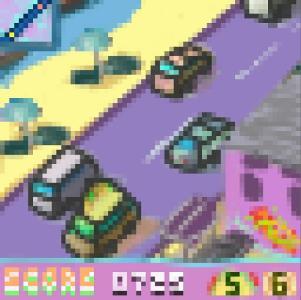
The original proof of concept drawn by my brother.
With a concept in mind, most of the time spent on the game was taken up by learning how to code. I’d attempted other projects in Lua before, but this was the first time I’d really dug into the language and what it was capable of. In spite of my best efforts, the problems that arose seemed to be unending. For every issue I solved two more would pop up in its place.
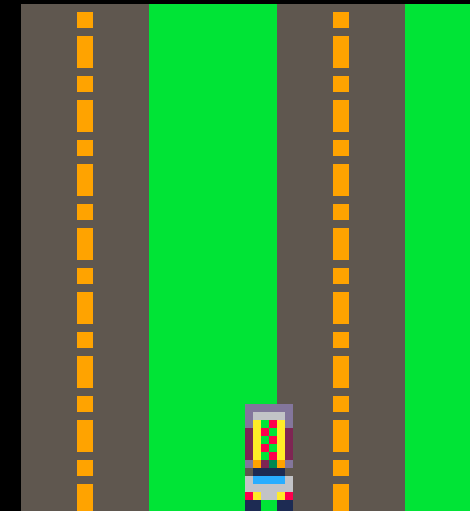
One of the issues I encountered early on. Lesson learned: be better organized.
For several days my process essentially boiled down to throwing possible solutions at the wall until something stuck. The big paradigm shift that increased my productivity occurred when I approached the game on its more elementary levels. For something that involves so much math and logic, it’d taken me longer than it should have to realize that planning out possible solutions with discrete data and information produces better results.
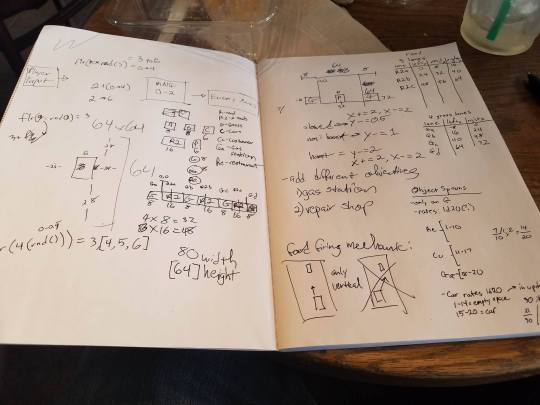
Remember kids: always show your work.
This was also the point in the development process where I realized my scope was larger than I had anticipated. In a bit of interesting retrospection, my friend Julian had the notion that I may have bit off more than I could chew and warned me as much. In a recent conversation with him, however, he admitted that it was something I’d have to find out for myself. While coding proved to be the bulk of my challenges, I most definitely learned more than just programming. Ironically enough, my focus on shoring up coding deficiencies resulted in me neglecting perhaps the most important part of the game: the gameplay.

Believe it or not, the released version of the game is just as cluttered and messy, if not moreso.
I had gotten so wrapped up in getting my game to work that I completely forgot to take a step back and figure out if the the game was fun. The development process for me was a triage of shoddy mechanics when it should’ve been a clear roadmap of priorities. My mistake was in not understanding what my limits were and what I was capable of. This goes back to my conversation with Julian where he helped me realize that perhaps this would be (and it was) a fact that I would just have to learn the hard way. The hard way ended up looking like:
Start with a nugget of a game idea
Add more facets/features to that nugget
Figure out how to program it into the existing build
Realize there are roadblocks and obstacles popping up that prevent me from easily implementing these features
Spend time to try and work it in anyways
Be pressured by the deadline and shift focus onto another aspect of the game
Realize these features also have their own roadblocks and obstacles
Back to Step 2 and keep jumping around Steps 2 to 8 depending on the mood of the day
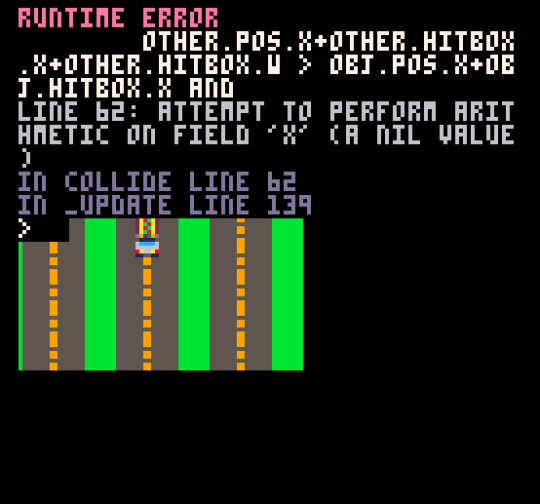
I saw the words “Runtime Error” more times than I care to admit. And I’m already admitting having seen them a lot.
What was interesting to see in how I worked was my tendency to fall back to my comfort zone. On a micro level this meant fixing the issues I could immediately address and/or knew how to address. On a macro level this meant stepping out of the developer role into the manager role. I was fortunate enough to work with two incredibly talented individuals, my brother, Noah, and my friend, Grant, who helped to produce the visuals and sound respectively. Coming from a background in the arts and entertainment, it took me (comparatively) little effort to crystallize a final vision for the narrative aesthetic and tone for the game and communicate that to the rest of my team.
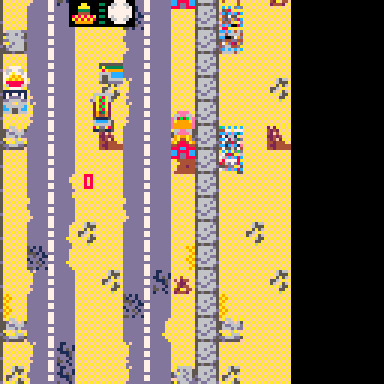
Original game is 64x64 but PICO-8 scales screenshots up to the engine’s default 128x128 resolution. Here you can see the ravaged post-apocalyptic wasteland of the distant future: 1999.
The end result is a game that has a strong personality, but is severely lacking in mechanics. There were far too many moving parts that weren’t intuitive and didn’t mesh well with each other, pitfalls of the game that stem from the seat-of-my-pants approach I took with the development process.
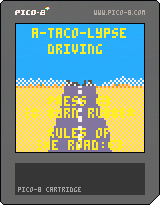
The final PICO-8 Cartridge.
In spite of all the glaring flaws with gameplay and the amount of stress I endured, creating this game left me with a complete and utter sense of satisfaction, something I haven’t felt in a long while. This was entirely a labor of love and I think (read: hope) it shows.
Organization is still very much an issue I face as an artist and developer. Maintaining focus and discipline towards a project is a difficult endeavor, especially knowing myself and how easily I lose interest or steam. But understanding my shortcomings is worthless if I don’t take steps to rectify them. The first step to avoiding these mistakes in the future is to take it slowly, ensuring that above all a finished product will have polish. What that means for me is understanding my limits, both in terms of what I can and can’t do.
And maybe, just maybe, that roguelike dating sim I have floating around in my end will someday end up on somebody else’s screen.
-Kyle
2 notes
·
View notes
Link
havent posted in a while but i made my first game so i’ll cut myself some slack
now to make a game that isn’t poop
0 notes
Text
ABZU (7/28)
In an effort to trim down my backlog, I’m going to make more of an effort to get through as many games and give them their 15 minutes of playtime. Abzu was one I got back in a Humble Bundle but never got around to playing. I was a little more intrigued in it after finding out that the art director was the art director for Journey as well, and that certainly shows. However, the comparisons to Journey don’t stop there as Abzu tries to go for the same visual storytelling that Journey does.
Story
The opening shot of the game takes you through the ocean, diving from surface into the depths, past schools of fish darting by, until you end on a bright ball of reddish light. After that is a cut to your character. Because I won’t be able to stop making comparisons to Journey, similar to Journey you start the game as a lone, isolated figure out in the middle of a vast wilderness. In this case, instead of an elegant Jawa in the desert, you are a faceless diver in the middle of the ocean. There isn’t much more setup to that but there are small hints as to the world the game takes place in.
First is the establishment of technology. The diver’s kit has a sleek, modern feel to it reinforced both by the flashlights that turn on in dark environments and a pinging feature that activates when you try to go off the beaten path. A few minutes into the game you run into what looks like a small drone that jets around, beeping and lighting up.
Second is the establishment of an otherworldly/ethereal plane. As the diver you pass through a bright portal that takes you to this vast, violet black environment with bright beams of energy and light that are emitted from a nearby pedestal. Beyond that, there are glimpses of a previous civilization etched into hieroglyphs on stone walls found throughout the first area. Their design is similar to that of the diver, so there will mostly be an attachment drawn later in the game.
Similar to Journey.
As my interest was kind of starting to flag around the 12 minute point, the game did manage to pick up by bringing back an established creature to eat up the drone and showing more of the ancient technology in the background. Hopefully more of these moments are peppered appropriately throughout the game.
Mechanics
The swimming feels very nice and fluid (ayyy), and you move appropriately slow for the first area at least. There is a latch on mechanic where you can travel holding onto larger fish but that appears to be for more of a scenic ride than any faster movement. The swimming felt a little finnicky at first but after setting the controls from Inverted to Normal it was much easier to settle into.
X allows you to ping and interact, but the pinging doesn’t really come into play until you meet your drone who simply chirps the same number of beeps in response.
Finding statues allows you to “meditate” which effectively lets you track the camera on any nearby fish. The first statue, and presumably every statue afterwards, is placed in a well-lit area with plenty variety of fish to keep track of.
Unlike Journey, ABZU seems to rely a little more heavily on the visuals to keep the player interested rather than small game mechanics. Even in the beginning of the game, your ability as the player in Journey to play a small gliding and hopping game with the scarf and interact with a large amount of the environment keeps the player far more engaged than looking at, admittedly gorgeous, scenery.
Aesthetics
The visual style of ABZU is very clearly it’s strongest aspect. The sleek shapes, bright vibrant colors, and excellent use of lighting/shading to establish mood and tone offer consistently gorgeous panoramic views. Unlike Journey, however, the game seems to center its visuals around discrete areas rather than setting up a series of scripted events and establishing what can be thought of as a painting in motion.
Technology
Abzu offers another somewhat related surprise in that it shows just how capable Unreal is towards creating minimalistic colorful graphics. I suppose that may just be a bias I have towards thinking of Unity as largely having games capable of this sort of aesthetic but titles like Abzu and Gigantic prove otherwise.
The game handles incredibly smoothly with no loading times, or rather loading times that are hidden by the scenery (similar to Journey). Excellent use of pathfinding and AI in the fishes to create a wonderful replication of underwater life.
All in all, an interesting game but Journey does everything it does and better. Abzu is certainly gorgeous looking but I can’t help but feels there’s just too much of a disconnect with me as the player and what my character is doing on screen.
0 notes
Text
LOWREZJAM2017 (1)
While I’m making slow and steady progress on LFG, my turn-based puzzle game, I figured I may as well take the plunge and take part in a game jam so I can kickstart myself into actually making a FINISHED product. Between posting updates on this tumblr and constricting myself to the jam’s deadlines, I’ll have sufficient motivation to pump something out.
I chose LOWREZJAM mostly because of its size limitation of a 64x64 canvas, which is a fantastic constraint for someone like me who tends to add on multiple features before carefully considering the consequences. This way, I’ve been able to distill the core idea and will solely build around that.
Story
After a bit of brainstorming the idea I settled on is a driving game in the vein of Crazy Taxi, where the goal is to deliver a customer his food before time runs out. This will be a good opportunity to delve into and learn physics, at least for Love2D, as I’d like to implement collision and car destruction as part of the mechanics.
Mechanics
The basic idea is that you are trying to get from Point A (start) to Point B (taco truck) and deliver the food to Point C (customer). The player will be driving at the height of rush hour traffic, where laws and common decency be damned. While there will be openings in traffic, I plan on making collisions a part of the gameplay which will add in two mechanics that the player needs to be aware of:
Using the physics of oncoming traffic to direct them to the objective faster
Not exploding from too much damage taken
The win condition for the player is to deliver the food to the customer in the time allotted without blowing up. The loss condition, of course, is time running out or you blowing up. Boom.
Aesthetic
Talked to Noah, my brother, and I settled on a fast paced aesthetic, possibly in the veins of Retro City Rampage. Was listening to my Future Funk/Bass playlist while I was brainstorming and I think going for a neon/pastel color palette with a Future Funk/Bass soundtrack would work out pretty effectively.
Technology
Here’s the fun (read: challenging) part. To pump out a small game fast, quick, and efficiently I’ll be sticking with Love2D, but this game introduces a whole slew of modules that I’ll be wrestling with, namely graphics and physics. I was helped out by a user on the jam’s discord channel, Aki, who mentioned that the function love.graphics.setDefaultFilter(”nearest”, “nearest”) should help me with scaling 64x64 to a higher resolution while still maintaining that small canvas. Thankfully, there is a little over two weeks for this jam to end so that should be enough time, if I really crank away at it, to learn what I need to for this game.
This has been a rather productive day for me in game design. Read a bit more of “The Art of Game Design”, cranked out some good ideas for both my DnD one-off and LFG, and even planned out the rough rough (read: rough) roadmap for The Burrito Mile (hey look a title). All in all, good work done today. Now I just need to maintain the consistency.
0 notes
Link
It’s my interview.
Language:日本語, 中文, English (dependent on Language-setting of browser)

5K notes
·
View notes
Text
Splatoon 2, Imperial Assault (7/24)
Been playing a few different games. Will lump impressions of them under one post.
Splatoon 2
Aesthetics
Splatoon 2 offers more of the same, which is a very good thing. The game has a very good sense of color, shape, silhouettes, and how they all fit together in space. I’m reminded of the times I went to Great America, where there was (and still might be) a Nickelodeon section of the park. Everything felt like it was a toy to be played with merely by looking at it. Splatoon 2 captures a lot of this sentiment, with its use of exaggerated geometry, round, bouncy structures, and vibrant color palette.
The fashion and style that the game is based around, the Japanese bubblegum skater chic, meshes very well with the overall aesthetic and the ever-changing nature of the solid primary colors. It’s a very organized mess that is just plain fun to look at and live in.
Mechanics
Gameplay is near identical to Splatoon 1 with two key differences:
The first is the addition of a new PvE mode, Salmon Run. For a relatively simple game mode (wave defense) it uses the game’s mechanics to the fullest: squid swimming is an effective way to maneuver the map and find bosses, the different randomized weapons and bosses are varied such that you have to change and adapt your playstyle, and maintaining inked turf is crucial to keeping effective control of the field.
The second big change in 2 is the complete overhaul of specials. While certain special’s mechanics exist in some form (e.g. Killer Wail becoming Sting Ray, Inkstrike becoming missiles, etc.), the impact and strength of the specials as pure offensive techniques has been lessened. The tradeoff, which I would argue works for the better, is that specials are far more oriented around positioning and your teammates. On their own, the specials tend to be rather lackluster, but when supported by a team that either gives you an opening or capitalizes on your special, it can be pretty devastating to the enemy.
Story
Splatoon 2 is interesting because for such a seemingly shallow game, it has a surprising amount of depth to both the characters and the history of the world. The single player, as in the first, has collectible pages that unlock more details about the world and past events. I’ll have to delve a little deeper in, but if Splatoon 1 is any indicator the game can have some relatively dark tones for a family friendly game.
The characters continue to be fantastic, as both their dialogue and visual designs give the players a full picture of their personalities. That said, the new celebrity duo, Pearl and Marina, are an interesting replacement to Callie and Marie and I’m not quite sure how I feel about them yet. The strange paradox here is that while their personalities are quite pronounced and different, I don’t get as much of a distinct difference between them as of yet. From what I’ve seen so far, Pearl is twitchy angry ankle biter genki girl and Marina is the shy soft-spoken easily embarrassed wallflower, but that could be more of the fanbase’s headcanon seeping into my head rather than anything from Nintendo themselves.
Technology
The game runs at a very smooth 60(?) FPS. The game handles beautifully and while there are load times, it’s not nearly as bad as Splatoon 1.
While there were some network and connectivity issues during the Open Beta (Splatfest), the game seems to have mostly eased out and been operating at stable connections. For the most part. I’ve run into more than a few games where there was at least one DC (oftentimes more), and I’m not sure if that’s because of leavers or Nintendo’s less than stellar netcode.
Imperial Assault
Aesthetics
The game is very neatly packaged. It comes with a very nice assortment of very detailed plastic minis, a wide array of colorful tokens, and well drawn tilesets that do a very good job of creating very diverse and modular scenery. IA keeps in line with Star Wars’ established nu-retro pulpy scifi tones, with sleek lines, solid colors, and tech embellishments.
Mechanics
True to form, Fantasy Flight Games has created one of the most confusing rulesets I’ve ever had the (dis)pleasure to agonize through. Thankfully, my group of players is mostly at the point now where the rules are mostly remembered, with certain nuances being covered by the rulebook. However, it did take several months and more than several games being played wrong for us to finally play the game right.
The game plays much like XCOM in terms of combat mechanics, but the actual character progressions functions a lot like SRPGs. There is a high degree of customization, both in character talents/perks and the possible item upgrades. What’s neat, as IA is an asymmetric game, is that these mechanics are in place for both Rebel and Imperial players. Is this completely balanced? No. Is it still fun? Yes, with the caveat that it will take some growing pains to ease into a comfortable flow with the game.
Story
While a board game, IA is a game nonetheless and still abides by the elemental tetrad. Having the game be based around a pre-existing franchise, especially one as big as Star Wars, offers no shortage of flavor; there are countless species, planets, environments, storylines, movies, factions, and much much more to draw from.
The explicit context of IA is that the players control an elite strike squad of rebel soldiers, tasked with infiltrating high priority Imperial territories and carrying out covert (or not so covert) missions. The story is fairly simple in that regard, but like the original trilogy there’s something to be said for a narrative being straightforward if done well.
Technology
The board game medium is definitely one that works for IA and, due to the asymmetry of it, is almost a necessity. Sure, you could design this as a 4v1 game and put it in Unity, but there’s a special tactile comfort you get with moving your pieces, drawing cards, and rolling dice. To that end, the cardboard tech that IA is comprised of is perfect.
#splatoon 2#splatoon#nintendo#switch#imperial assault#star wars#board games#rpgs#fps#fantasy flight games#ffg#games#thoughts
0 notes
Text
Children of Zodiarcs (7/21)
Aesthetics
Having finally finished Mission 2, which was a very involved process, I’ve gotten to see a bit more of the ancient tech at work. It’s got a feeling not unlike Transistor, with electric blue lines of energy and golden brass trimming.
Mechanics
Xero brings some cool stuff to the table. I’ve seen comments about how there’s a lack of any real way to customize/build your characters, but I think there are enough combinations in the dice and cards such that you can have at least two different ways to use party members. One interesting one could be debuff/control Brice, because at the moment I’m only using four purple cards in a deck of 20ish.
Story
Narrative is chugging along acceptably. Still a lot of setup. We’ll see what the payoff is like.
Technology
The ragdoll physics continue to be very amusing. I killed an enemy with Brice using “Burn, Baby, Burn!” and they shot off the roof in the explosion.
0 notes